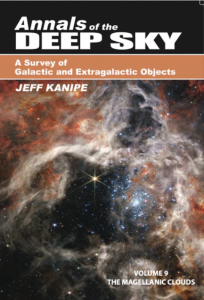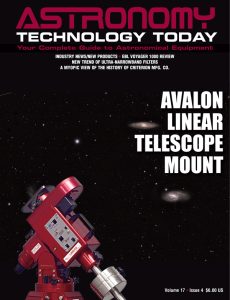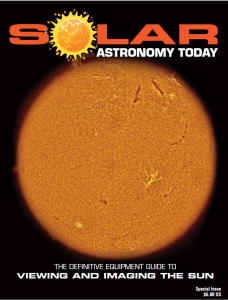Each edition of the Annals of the Deep Sky offers a comprehensive reference that guides amateur and semipro astronomers into every corner of the observational universe. Each volume presents extensive descriptions of prominent stars and deep-sky objects offering a unique and comprehensive historical background and astrophysical appraisal of prominent stars and celestial objects.
 The latest volume in the Annals of the Deep Sky series is dedicated to the Milky Way’s nearest and largest satellite galaxies, the Magellanic Clouds. Throughout history they have been the subject of awe and wonder, catching the eye of Indigenous peoples of Australia and New Zealand, 16th century mariners, and astronomy’s pioneer observers such as Nicolas-Louis de Lacaille, James Dunlop, and John Herschel. In the late 19th and early 20th centuries, northern astronomers began traveling to the Southern Hemisphere to photograph, map out, and study the celestial constituents of what they referred to as Nubecula Major and Nubecula Minor.
The latest volume in the Annals of the Deep Sky series is dedicated to the Milky Way’s nearest and largest satellite galaxies, the Magellanic Clouds. Throughout history they have been the subject of awe and wonder, catching the eye of Indigenous peoples of Australia and New Zealand, 16th century mariners, and astronomy’s pioneer observers such as Nicolas-Louis de Lacaille, James Dunlop, and John Herschel. In the late 19th and early 20th centuries, northern astronomers began traveling to the Southern Hemisphere to photograph, map out, and study the celestial constituents of what they referred to as Nubecula Major and Nubecula Minor.
This book presents not only a thorough historical account of the clouds dating back 40,000 years, but also how astronomers’ ideas of the Clouds have changed over the decades – particularly on the Clouds’ origins, interactions with the Milky Way, and the quizzical aspects of star formation posed by their many unusual clusters and H II regions. Readers will discover the observational richness and astrophysical conundrums that are the Magellanic Clouds, true treasure islands lying just beyond our Galactic shores.
This edition of the Annals of the Deep Sky also includes two special fold-out maps for exploring the Magellanic Clouds in more detail, one showing the Large Magellanic Cloud and the other the Small Magellanic Cloud plus extra detail on the Tarantula Nebula, the star-forming region also known as 30 Doradus.
You can purchase the Annals of the Deep Sky here.

 And to make it easier for you to get the most extensive news, articles and reviews that are only available in the magazine pages of Astronomy Technology Today, we are offering a 1-year magazine subscription for only $6! Or, for an even better deal, we are offering 2 years for only $9. Click here to get these deals which only will be available for a very limited time. You can also check out a free sample issue here.
And to make it easier for you to get the most extensive news, articles and reviews that are only available in the magazine pages of Astronomy Technology Today, we are offering a 1-year magazine subscription for only $6! Or, for an even better deal, we are offering 2 years for only $9. Click here to get these deals which only will be available for a very limited time. You can also check out a free sample issue here.
The Sun is more active than it’s been in years and if that’s not enough, we have the Annular Solar Eclipse on October 14, 2023 and the Total Solar Eclipse on April 8, 2024! If you’d like to learn more about the technology behind solar observing, solar imaging and more, you can check out our free publication, “The Definitive Guide to Viewing and Imaging the Sun”. You don’t have to sign up or provide any information, simply click here and enjoy reading!

